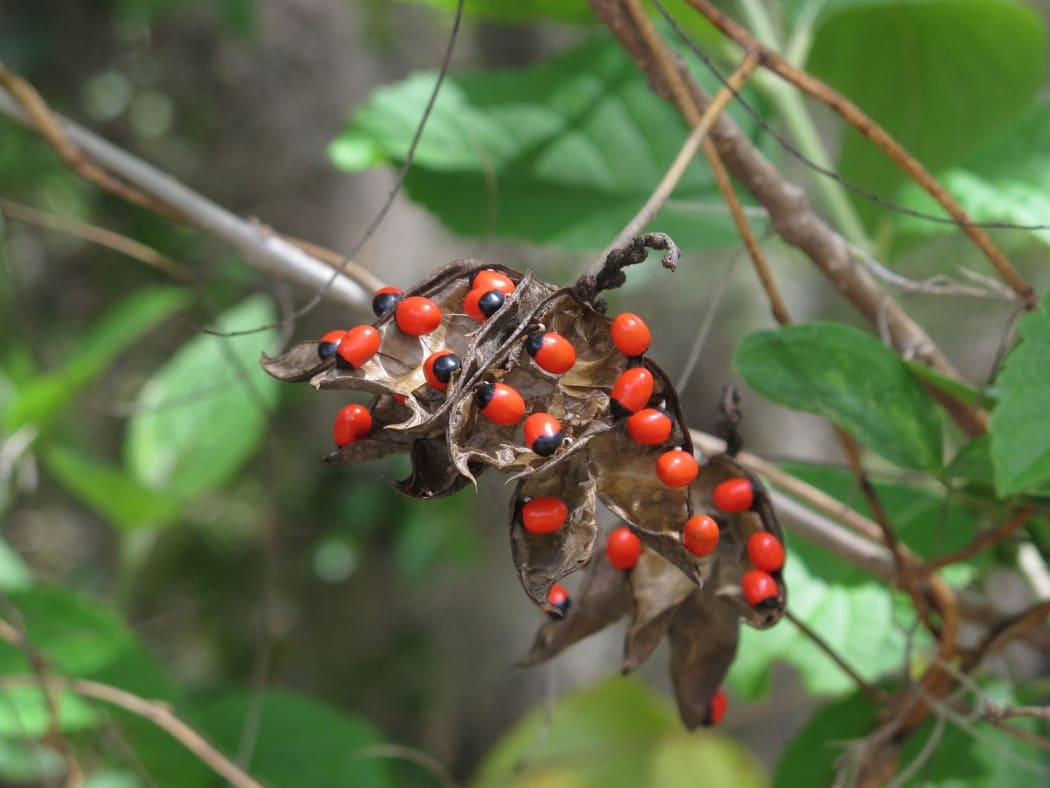
Abrus precatorius (commonly known as jequirity bean or rosary pea) is a plant best known for its red seeds; these are valued throughout Africa for their bright red coloration and used as a decorative element on masks and statues, in jewellery, and in percussion instruments. While the leaves of the Abrus precatorius are consumed as a vegetable in central and east Africa, its seeds are very poisonous. Ingestion of a single seed, well chewed, can be fatal to both adults and children. Symptoms of poisoning include nausea, vomiting, convulsions, liver failure, and death, usually after several days. The seeds contain a toxin called abrin which is closely related to ricin (and twice as toxic). However, these seeds can pass undigested through the gastrointestinal tract because of their hard shell. So, if you were given one during a poison ordeal, the key was not to nervously start chewing!
Such seeds where often attached with resin or wax on the masks of several African cultures, among which the Bobo and Bwa (Burkina Faso), Binji (D.R. Congo), Bozo (Mali) and Wè (Ivory Coast). Especially among Nigerian cultures, the prevalence of the use of these bright red seeds is high: we find them on masks from the Igala, Jukun, Kutep, Angas, Kulere, and Sura; and on Afo, Koro and Hausa headdresses. Several Tiv ritual objects (including skulls) tend to be covered in them as well. It’s less frequent to encounter them on statues, although the famous Senufo deble statues of the Folona Master had large numbers of them attached to the body. Some Koro cups from Nigeria, as well as Chamba statues also feature them, and rare Luluwa, Chokwe and Lega statues exist with few seeds attached to the head.
I have not been able to find much literature on the symbolic meaning of these specific seeds. In his writings about the Leopard society among the Bembe in Eastern Congo, Gossiaux wrote they were called also called ‘eye of the night’, and a pejorative right of Akanga initiates – who were informed about their poisonous properties. Surely, other African cultures must have been well aware of their toxic nature, which must have come with strong symbolic connotations. The color red itself obviously often had a strong ritual meaning. Kuddos to the African artists, as long before Duchamp, they were already working with ‘ready-mades’ to increase the power of their works.
Please do get in touch if you have any more information about the use and symbolism of these seeds in African Art! And, be careful if you have any children running around in your house when you possess objects featuring these seeds, they do look like candy..






